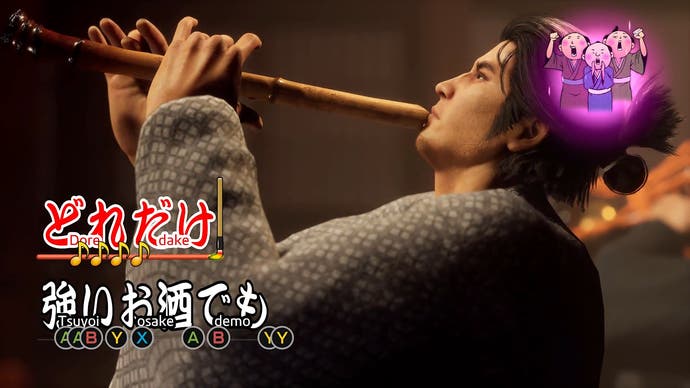Like a Dragon: Ishin! is shaping up to be a safe but crowd-pleasing trip to the past
Déjà Kiryu.
Like a Dragon: Ishin! stands in a somewhat odd position. It's the first release in the series to drop the Yakuza title. It's a remake of an almost 10 year old game, but is new to audiences outside of Japan.
Having played through a couple of hours of an early chapter, I think it's safe to say that Ishin retains the core of what Yakuza fans dearly love about the series, all with a fresh lick of paint.
The familiar open-world full of side-activities remains. There's several restaurants, sub-quests, and mini-games dotted around the city of Kyo for you to get lost in. During my time with the game, I often got distracted from the main quest to explore each alley and find as many sub-stories as possible.
The sub-stories are what make the world of Kyo truly feel lived in. Through these, the player is submerged in the politics and attitudes of 1860s Japan. One sub-quest requires Ryoma to teach children about global geography, revealing how wary Japan was of the threat of foreign countries until the end of the Bakumatsu era. Another sees Ryoma come to the aid of a Western scholar named Creek, who is attacked by a group of locals enthusiastic about enforcing the edict to expel foreigners.
Whilst the humour of a Yakuza game is still present, the setting of Kyo is vastly different to modern-day Kamurocho and Yokohama, which have been the settings for the mainline games so far. 1860s Kyo was bloodier and more brutal, as it was a time of political and social instability. Where terms have been left as a romanisation of the Japanese words, RGG Studio has added a glossary function which will explain the term in a pop-up. It's always accessible from the in-game pause menu, making it handily available whenever you find yourself struggling with a gap in knowledge of Japanese history, and while I felt it was a bit disruptive, it was much appreciated when unfamiliar concepts were brought up by NPCs. I'm intrigued to see Ishin's presentation of the Bakumatsu period and its social climate throughout the rest of the game.
Whilst sub-stories offer humanisation and context to Kyo, mini-games are where the delightful nonsense can be found. I wasn't able to try out all the mini-games available (and as Yakuza fans will know, there are a lot in a Yakuza game), but the ones I did give a go were full of absurdity and gave me plenty of laughs. I went to sing the newly-added Baka Mitai at karaoke, which has been rearranged with traditional instrumentation and complete with a moving flute solo from Ryoma. Elsewhere, Ryoma got his ass handed to him at a brothel by Anna, who thoroughly bested him at strip rock-paper-scissors.
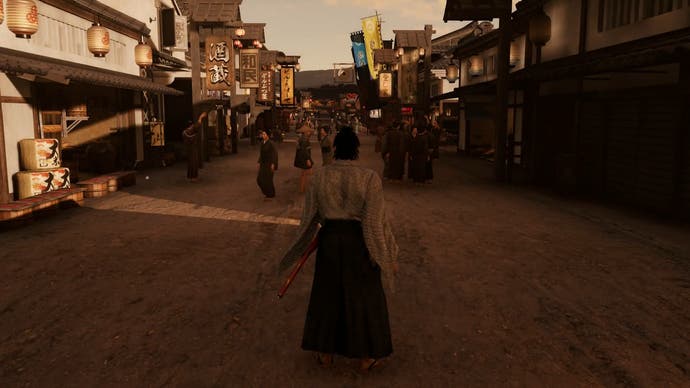
Inevitably as I explored Kyo, I bumped into many of the small enemy groups that Ryoma-round the map, allowing me to experiment with the four different combat styles. Whilst not much can be said of Brawler, which is a staple of Kiryu's styles in the mainline Yakuza games, I enjoyed using the others. Swordsman offers what you'd typically think of when imagining samurai. Using a katana, it's best when you need a solid block paired with precision strikes. Gunman proved to be my least favourite, although it's a good choice for long-range combat.
Wild Dancer, which uses both a katana and a gun, was certainly my favourite to use. It's extremely showy in its combos, including one where Ryoma will swing around his sword whilst firing multiple shots at the same time. You also don't have to worry about being too good at blocking, because its side step allows you to easily avoid attacks. Switching between combat styles is seamless, so you can easily change your style according to the situation. As ever, Heat Actions are dramatic and bloody, and allow you to perform special moves like a parry if you've unlocked it.

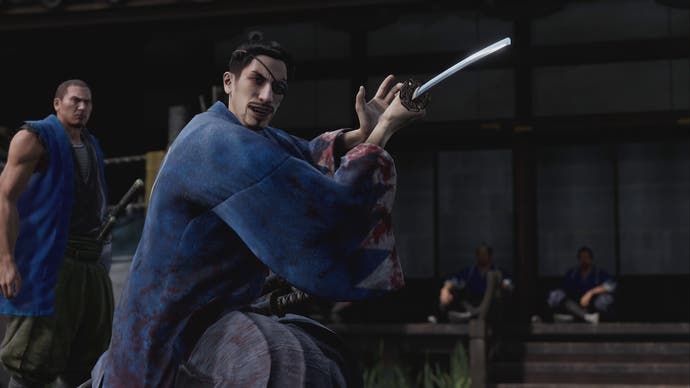
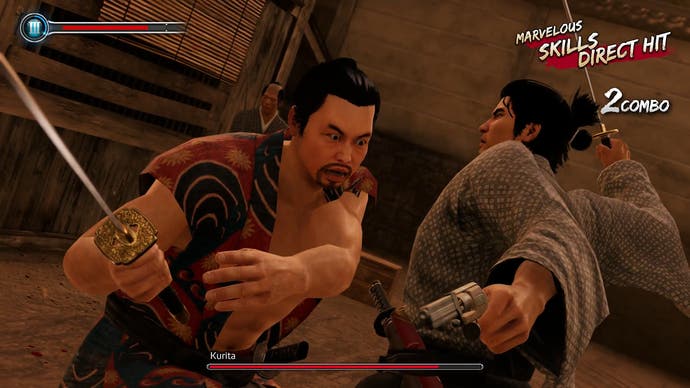

Combat is scored based on attack, defence and technique, and you'll be given a quick rundown of your statistics. I felt the regular enemy encounters found in the open-world were too short to fully appreciate the combat styles, but in the longer one-on-one boss battles against Shinsengumi Second Division Captain Shinpachi Nagakura and the mysterious Man in White I was really able to focus on honing my technique with each.
What keeps Ishin from feeling too dark and heavy is its fanservice. Although many of the characters which appear - including Ryoma Sakamoto and Soji Okita - are based on figures who shaped the history of Japan, the fictionalised versions of them are represented by characters from the mainline Yakuza games. Ryoma is based on Kiryu, and he is equally as stoic and driven by his modern counterpart. This reframing of beloved characters of the series in one of Japan's most fascinating periods was very enjoyable to watch.
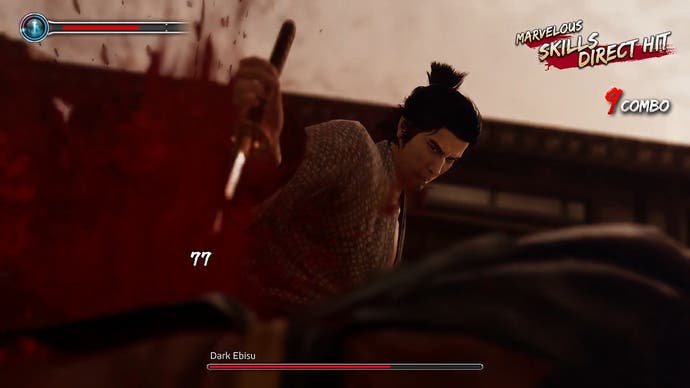
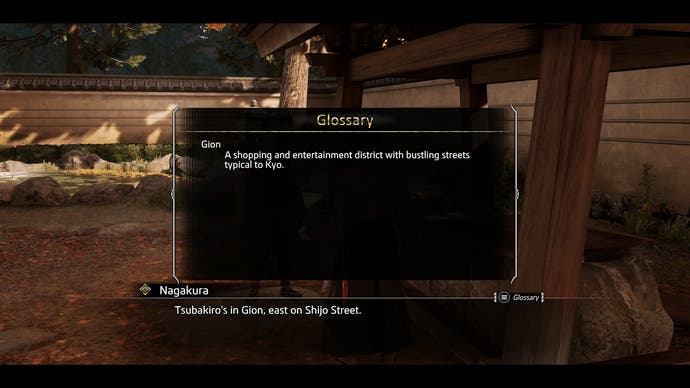
The new photo-mode which lets you change Ryoma's pose and expression is definitely a part of this fanservice - goofy fun that allows you to mess around with Ryoma and make him pull faces which are very out of character.
My time with the preview felt too short. There are a lot of sub-stories and mini-games I didn't get time to try out, and I could easily have spent a couple more hours exploring Kyo. Crucially, although it may be the first release in the Like a Dragon series to drop the Yakuza name, Ishin still has all the hallmarks of a Yakuza game. The dense open-world, fun combat, and loveable cast is a formula RGG Studio has perfected over the series' lifetime. So far, it seems Ishin doesn't reinvent the series, but reuses what makes the Yakuza series great in a new, historical context.
